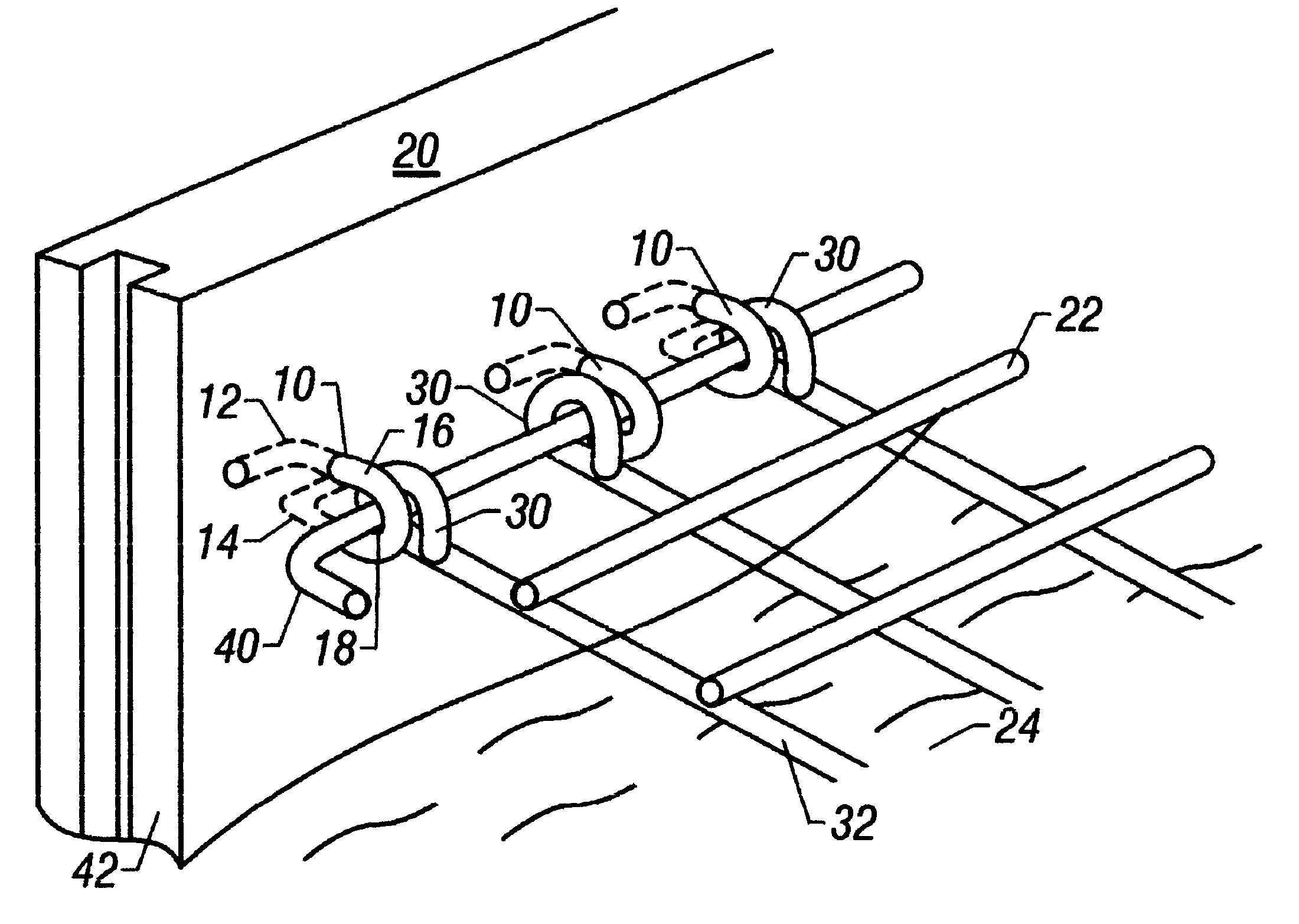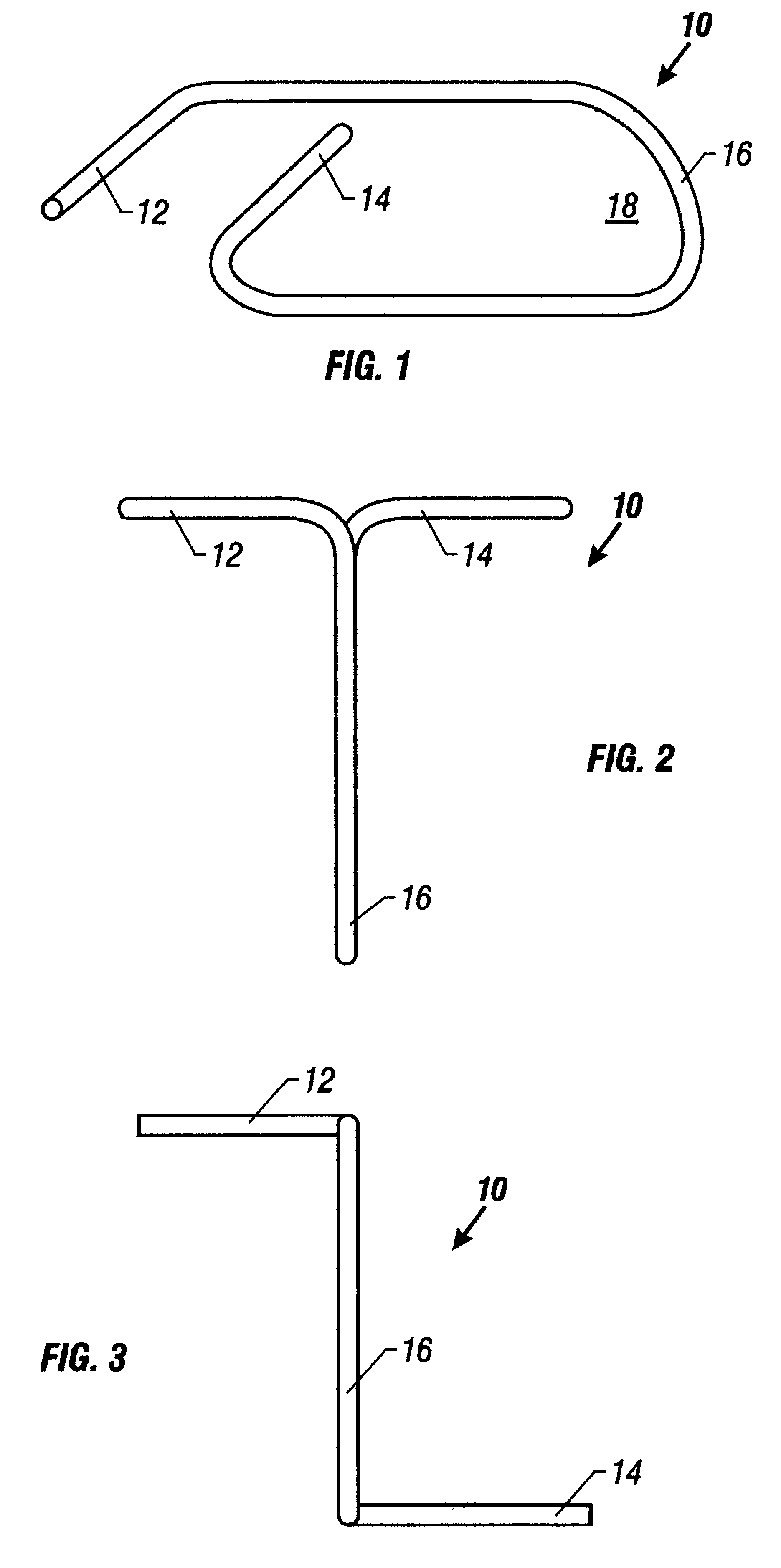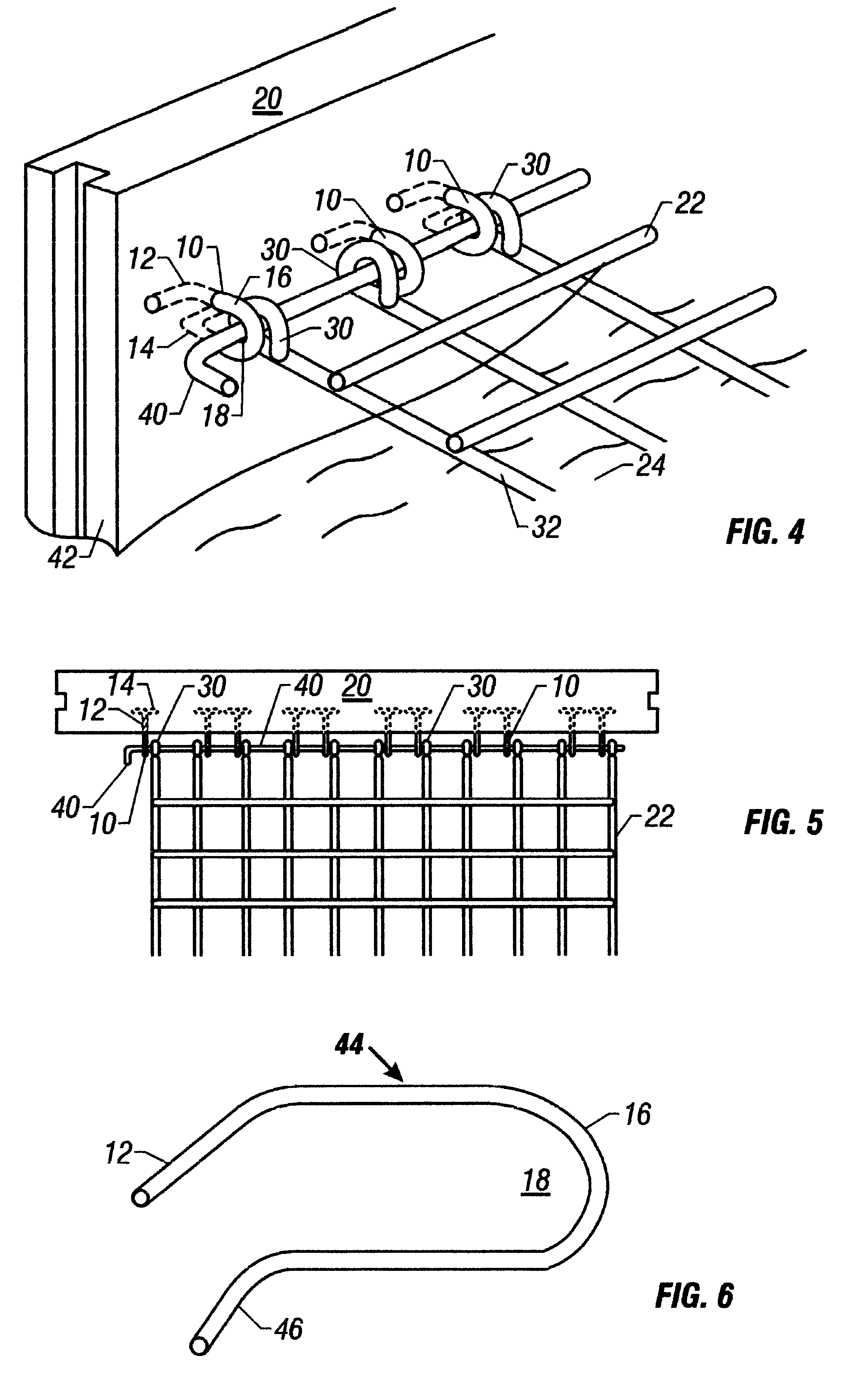Mechanical interlocking means for retaining wall
a technology of mechanical interlocking and retaining walls, which is applied in the direction of mining structures, excavations, artificial islands, etc., can solve the problems of difficult to provide a strong enough connection device to connect the retaining wall, the installation of prior art devices on the retaining wall is often tedious and time-consuming, and the difficulty of attaching the support members to the modular blocks
- Summary
- Abstract
- Description
- Claims
- Application Information
AI Technical Summary
Problems solved by technology
Method used
Image
Examples
Embodiment Construction
An improved method and system for attaching a welded wire gridwork panel to a plurality of face panels of a retaining wall is disclosed.
FIG. 1 illustrates a perspective view of a preferred embodiment of an anchor link 10 of the present invention. The anchor link includes two spaced apart L-shaped legs, an upper leg 12 and a lower leg 14. The upper leg and lower leg are joined by a U-shaped projecting end 16. The anchor link forms a vertical loop 18 to which welded wire grid-work panels are attached.
FIG. 2 illustrates a top plan view of the anchor link 10 of FIG. 1.
FIG. 3 illustrates a front elevational view of the anchor link 10 of FIG. 1.
FIG. 4 illustrates a perspective view of a plurality of anchor links 10 fixed within a face panel 20 and connected to a welded wire grid-work panel 22. The grid-work panel extends perpendicularly from the back of the retaining wall into soil 24. A plurality of wire loops 30 are formed at an edge of the grid-work panel, by bending the ends of a plur...
PUM
 Login to View More
Login to View More Abstract
Description
Claims
Application Information
 Login to View More
Login to View More - R&D
- Intellectual Property
- Life Sciences
- Materials
- Tech Scout
- Unparalleled Data Quality
- Higher Quality Content
- 60% Fewer Hallucinations
Browse by: Latest US Patents, China's latest patents, Technical Efficacy Thesaurus, Application Domain, Technology Topic, Popular Technical Reports.
© 2025 PatSnap. All rights reserved.Legal|Privacy policy|Modern Slavery Act Transparency Statement|Sitemap|About US| Contact US: help@patsnap.com



